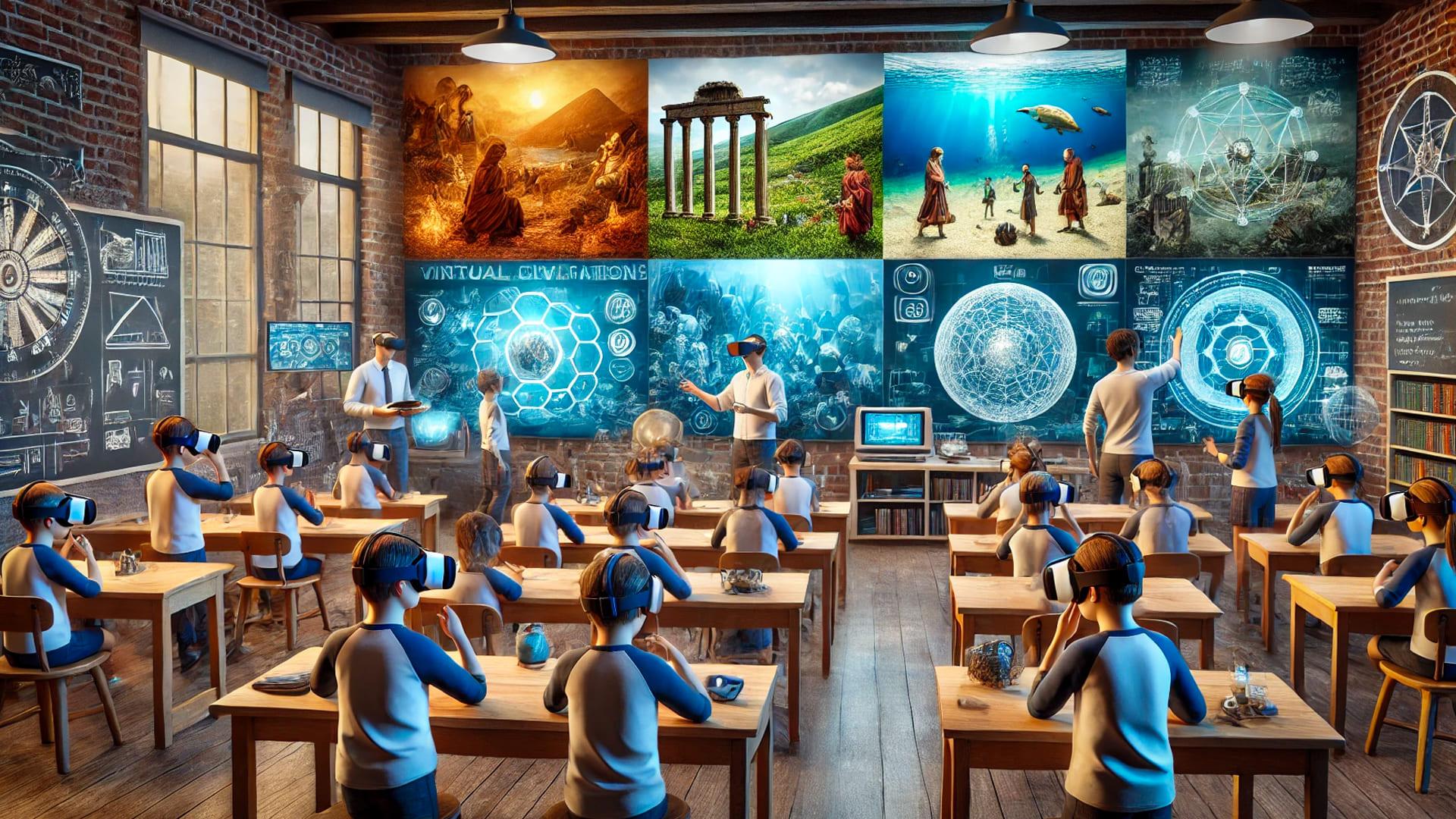Revolutionizing Education: How VR/AR Fuels Immersive Learning in the Modern Classroom
The modern classroom is undergoing a technological renaissance,with Virtual Reality (VR) and Augmented Reality (AR) leading the charge. These immersive technologies are not just buzzwords—thay are fundamentally reshaping how teachers teach and how students learn. Dive in to uncover how VR/AR is revolutionizing education through rich, engaging, and interactive experiences.
Understanding VR & AR in education
Virtual Reality (VR) and Augmented Reality (AR) are rapidly emerging technologies that merge the physical and digital worlds to unlock transformative learning experiences.
- VR: Envelops users in a completely virtual environment, engaging their senses and offering a distraction-free, simulated world.
- AR: Layers digital elements—like images, sounds, or interactive data—over real-world views, often through smartphones, tablets, or smart glasses.
These immersive learning tools empower teachers to make abstract concepts tangible and foster deeper understanding for students. Whether traveling to ancient civilizations in history class or exploring the intricacies of the human heart in biology, VR/AR closes the gap between theoretical knowledge and experiential learning.
Benefits of Immersive Learning with VR/AR
Why are educators and institutions worldwide investing in VR and AR technology for the classroom? Here are some compelling benefits:
- Enhanced Engagement: Immersive environments transform learners from passive recipients to active participants.
- Improved Retention: Hands-on, visual experiences have been shown to increase knowledge retention significantly compared to conventional learning methods.
- Accessible Simulations: Students can conduct science experiments or explore complex machinery in safe, cost-effective virtual settings without risk or resource limitations.
- Differentiated Learning: VR/AR adapts to various learning styles — visual, auditory, and kinesthetic — promoting inclusivity and accessibility.
- Real-world Application: Simulations of real-life scenarios (e.g., lab experiments, ancient events, workplace training) prepare students with practical, job-ready skills.
- Collaboration and Creativity: Manny VR/AR platforms foster group projects and creative problem-solving in a shared virtual environment.
Transforming the Modern Classroom: real-World Case Studies
The impact of immersive technology in education isn’t speculative — it’s already driving change. Here are examples of VR/AR revolutionizing learning across various institutions:
Case Study 1: Exploring Space with Google Expeditions
Google Expeditions, an AR/VR educational tool, has enabled students from urban and remote schools to embark on guided tours of the International Space Station, the Great barrier Reef, and ancient ruins, all from their classrooms. Teachers report increased curiosity and improved science comprehension rates.
Case Study 2: Medical Education at Case Western reserve university
The HoloAnatomy app, using Microsoft HoloLens AR technology, allows medical students to view and interact with a 3D holographic human body. This hands-on, immersive approach has accelerated anatomy comprehension and eliminated the need for cadaver dissection in early training.
Case Study 3: Empathy Building in Social Studies
In schools piloting VR empathy training programs, students “walk a mile” in the shoes of refugees, historical figures, or individuals with disabilities. Educators note a marked increase in compassion and social awareness among participants.
Practical Tips for Integrating VR/AR in the Classroom
Interested in introducing immersive learning to your students? Here’s how educators can effectively implement VR/AR-driven experiences:
- start Small: Begin with short,focused VR/AR activities that complement existing lesson plans. This allows you and your students to become comfortable with the technology.
- Select Purpose-driven Content: Choose VR/AR applications and resources aligned with curriculum goals (e.g., biology, history simulations, virtual field trips).
- ensure Accessibility and Inclusivity: Test applications for accessibility features, such as text-to-speech and adjustable visuals, to ensure all learners can participate.
- Encourage Collaborative Experiences: Promote teamwork with multiplayer or shared experiences, fostering discussion and group problem-solving.
- Monitor and Assess: Use formative assessments (quizzes, discussions, reflections) to gauge understanding and adapt teaching strategies accordingly.
- Stay Updated: Educational VR/AR technology is evolving rapidly; connect with other educators and stay informed of new tools and best practices.
For those using WordPress, numerous plugins and themes are now optimized for adding AR/VR content, allowing you to embed immersive experiences directly into your classroom website.
First-Hand Experience: A Teacher’s Outlook
“when I introduced virtual reality tours in my geography lessons, the response was unbelievable. My students were engaged and asking deeper questions than ever before. Even those who struggled with traditional textbooks found a new sense of enthusiasm and understanding. It’s changed my approach to teaching.”
— Mrs. Amy L., Middle School Teacher
Testimonials like this are becoming more common, as both teachers and students recognize the transformative power of immersive learning in today’s education landscape.
Challenges and Future Trends
While the transformative potential of VR/AR in education is clear, challenges remain:
- Cost & Accessibility: High-quality VR/AR equipment and software can be expensive and require adequate infrastructure.
- Teacher Training: Educators need dedicated training and support to use immersive technology effectively.
- Content Availability & Quality: as demand grows, so does the need for curriculum-aligned, pedagogically sound VR/AR content.
- Screen Time & Safety: Proper balance and guidelines are crucial to avoid excessive screen time and ensure age-appropriate use.
Looking ahead, the outlook is bright. Emerging technologies like AI-powered learning analytics, wireless VR headsets, and browser-based AR make immersive learning even more accessible and customizable. As these advances unfold, VR/AR will continue to revolutionize classrooms—preparing students for a digitally driven future.
Conclusion: Embracing the Future of Education
VR and AR in the modern classroom are more than novel teaching tools—they are catalysts for transformative, student-centered learning. By ushering in the era of immersive education, teachers can spark curiosity, deepen understanding, and equip learners with real-world skills for tomorrow’s challenges.
As the educational landscape evolves, embracing VR/AR-powered immersive learning will not just enrich classroom experiences, but also help bridge educational gaps and foster lifelong learning. The future of education is immersive, interactive, and inspiring—starting today.

